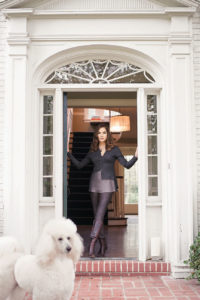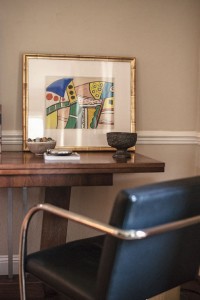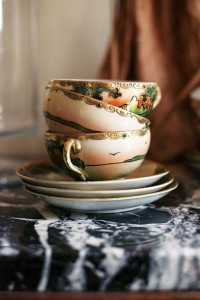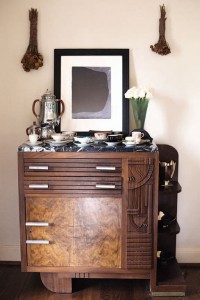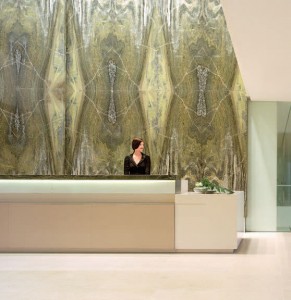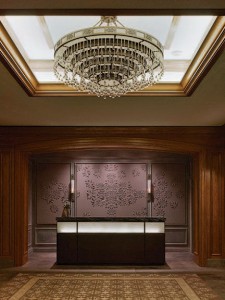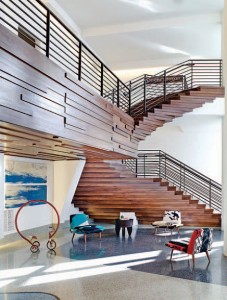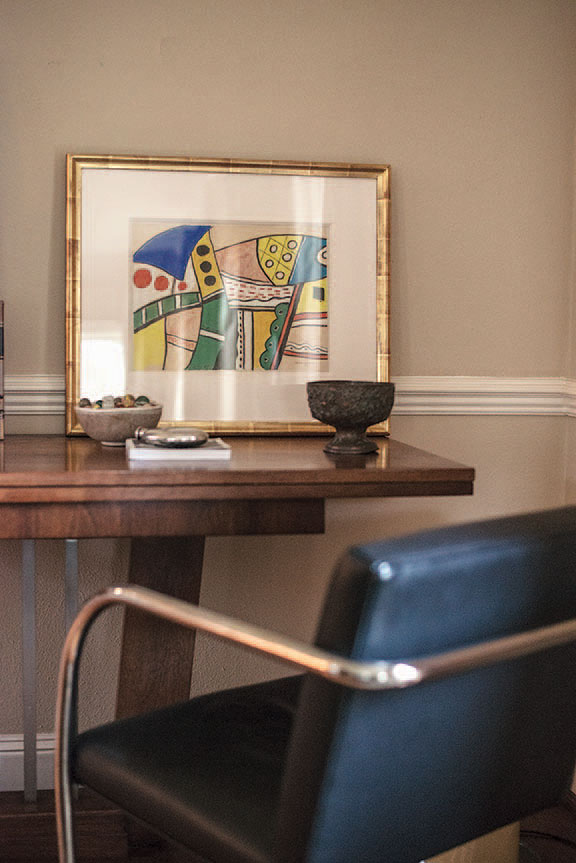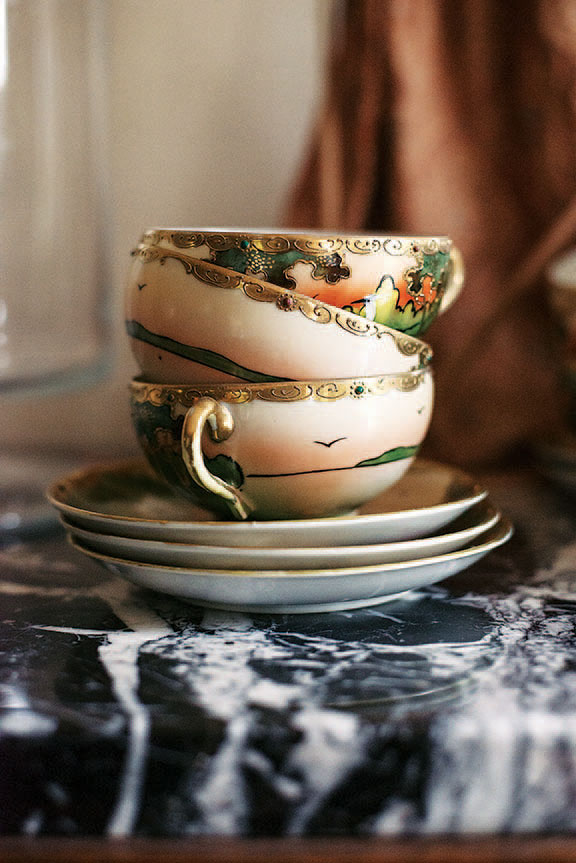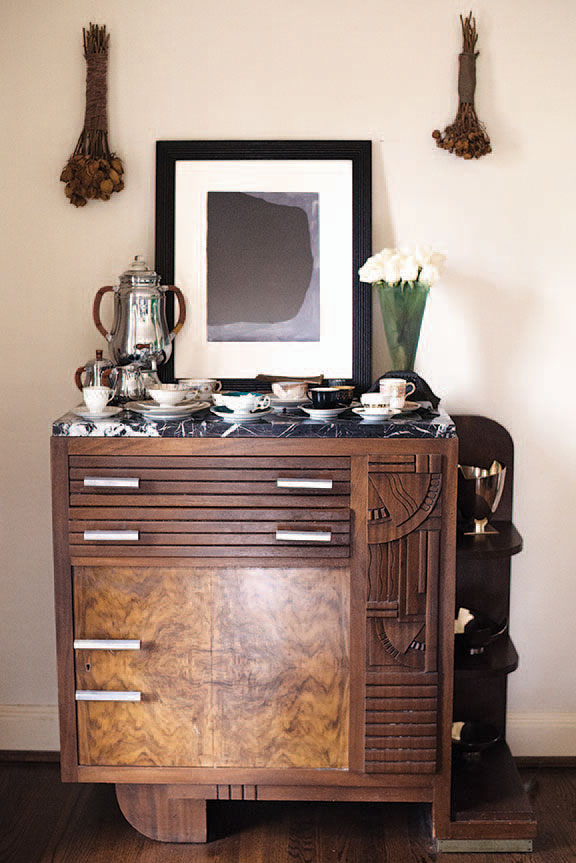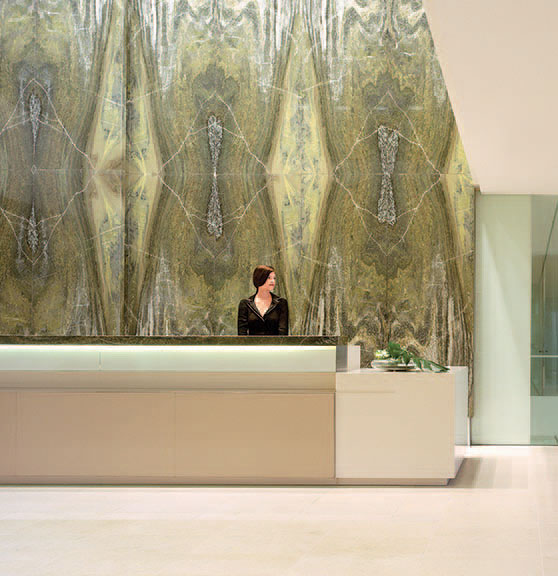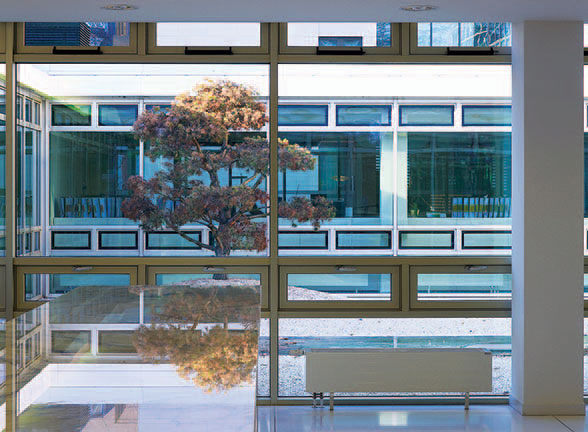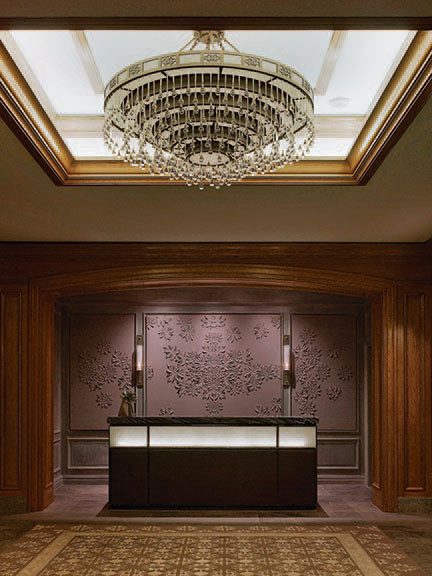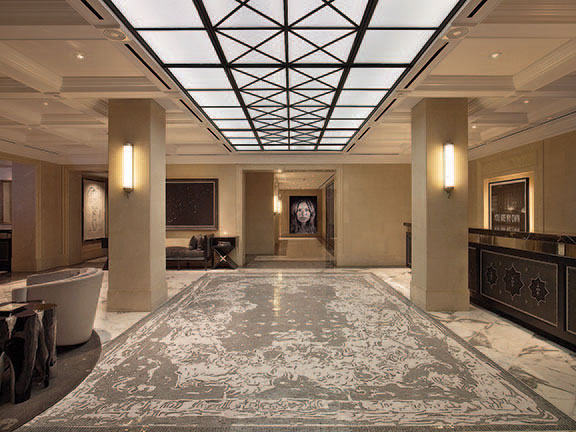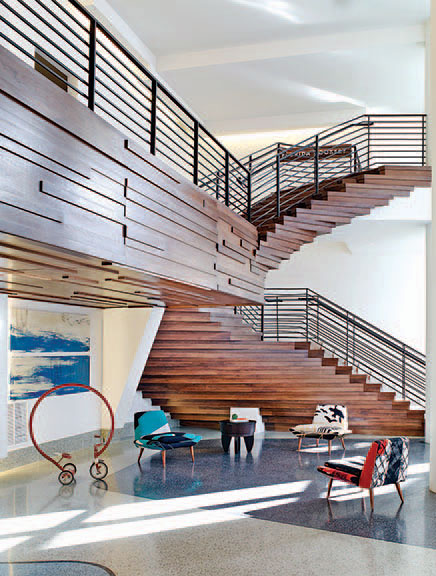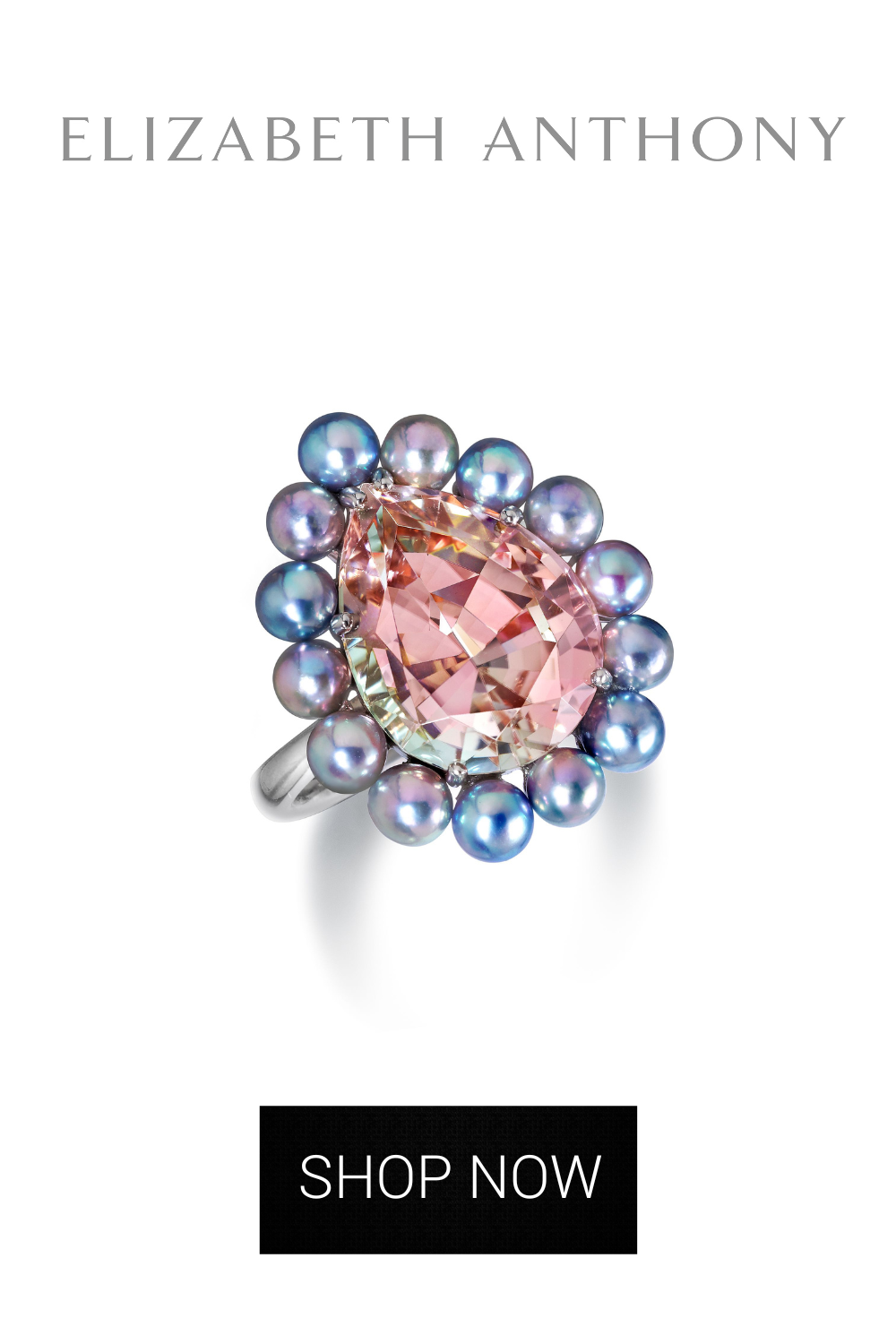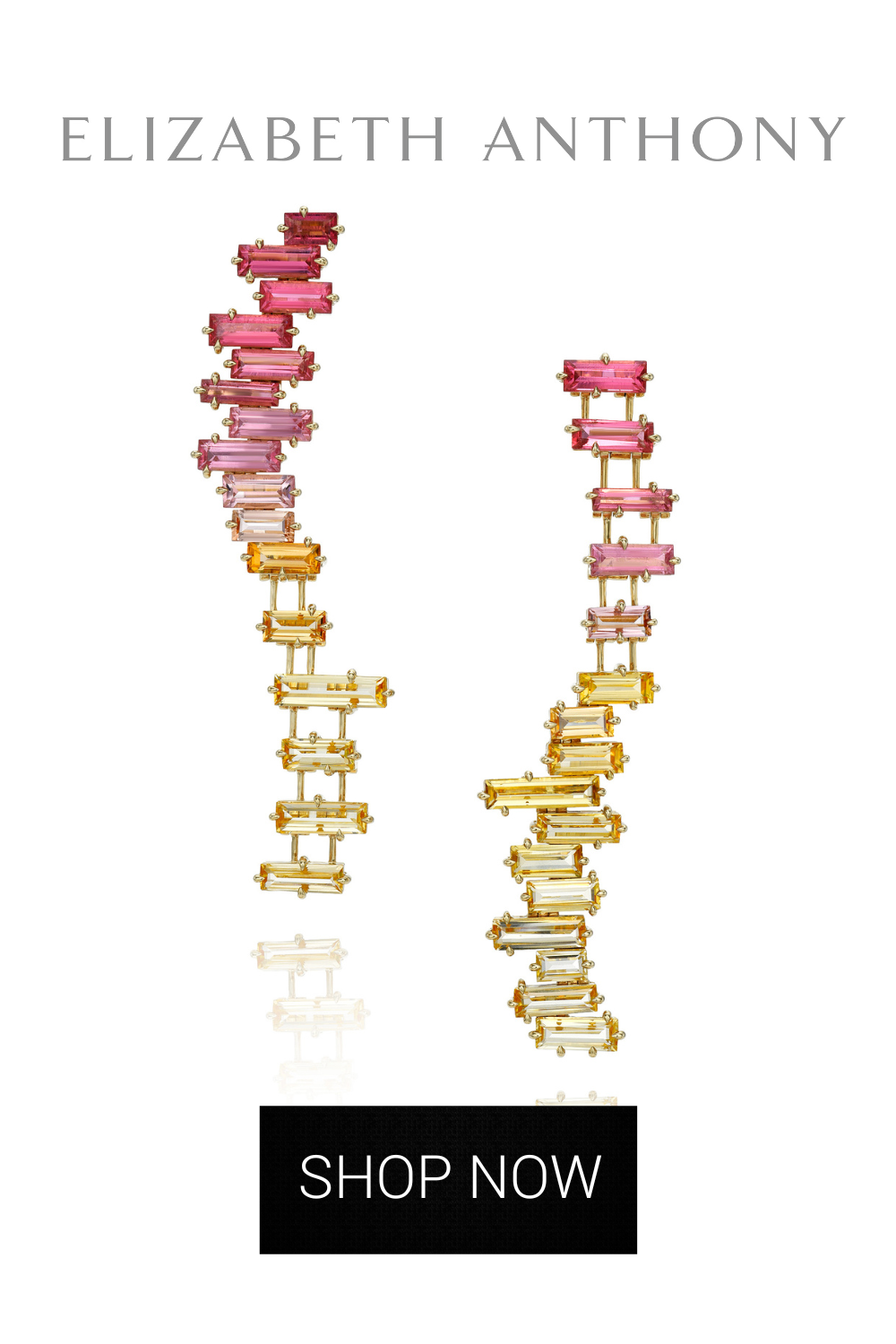Houston’s Designing Woman: From Celebrity Lairs to Sky-High Luxury, Lauren Rottet Is Conquering the World
BY Rebecca Sherman // 09.10.15Lauren Rottet and her poodle, Lilly Bunny, outside their Houston home. (Photography by Shayna Fontana. Hair Jourdan Moore for Etheria Salon, makeup Ashley Holm.)
Lauren Rottet, president and founding principal of Houston-based Rottet Studio, is recognized globally as an innovator; she is one of only eight people — and the only woman — to be named a fellow by both the American Institute of Architects and the International Interior Design Association. Heady stuff. She’s won virtually every major award and honor in the industry, including Designer of the Year awards from both Interiors and Contract magazines, and was included in Interior Design magazine’s Hall of Fame. This spring, Rottet was inducted into the Hospitality Design Platinum Circle along with international design heavyweights Adrian Zecha, M. Arthur Gensler Jr. and David Rockwell.
It’s not hard to understand why people are drawn to Rottet’s work. The sophisticated, contemporary glamour of her concepts transcend design styles. Often referencing the past, she reaches for what has not been seen or experienced yet, incorporating luxurious and cutting-edge materials and furniture, including her own furniture designs. Her rooms are sleek and sensuous, thrown off by irreverent modern art or jolted by over-scale, unexpected elements. High-profile projects include a raft of ultra-chic hotels such as The Surrey in New York, St. Regis in Aspen, the presidential bungalows at the famed Beverly Hills Hotel, the James Royal Palm in Miami Beach and the Loews Regency on Park Avenue in midtown Manhattan. Most recently, she has received accolades for a stylish redo of Target’s marketing offices in New York City, a dazzling overhaul of the United Talent Agency’s 120,000-square-foot offices in Beverly Hills, and rooms for the elite Viking River Cruises, which debuted in May. All that, and she still found time to orchestrate a breezy terrace atop the Arthur Sachs mansion in New York City for the 2015 Kips Bay Boys & Girls Club Decorator Show House.
Rottet’s upcoming calendar is just as jam-packed. She is currently working on several residential high-rises in New York City, including a midtown Manhattan project slated to be the tallest residential building in the country when it opens in 2018. Later this year, she launches the Rottet Collection, furnishings based on her custom hotel furniture designs, including pieces from The Surrey, the James Royal Palm and the St. Regis. Two of her most buzzed-about works in progress are Houston-based: The River Oaks condominiums, a mid-century gem in the heart of River Oaks (see our story in the May 2015 PaperCity), and Hotel Alessandra, a 225-room luxury boutique hotel at GreenStreet downtown, both slated for completion by 2016. Rottet, who grew up in Houston and studied architecture at the University of Texas, is also restoring her George Nelson-designed house in Montauk (where she snowshoes) and furnishing her house in River Oaks in Houston.
Here, she riffs on the details for some of her favorite projects, her design inspirations, and what it’s like being female in a male-dominated industry.
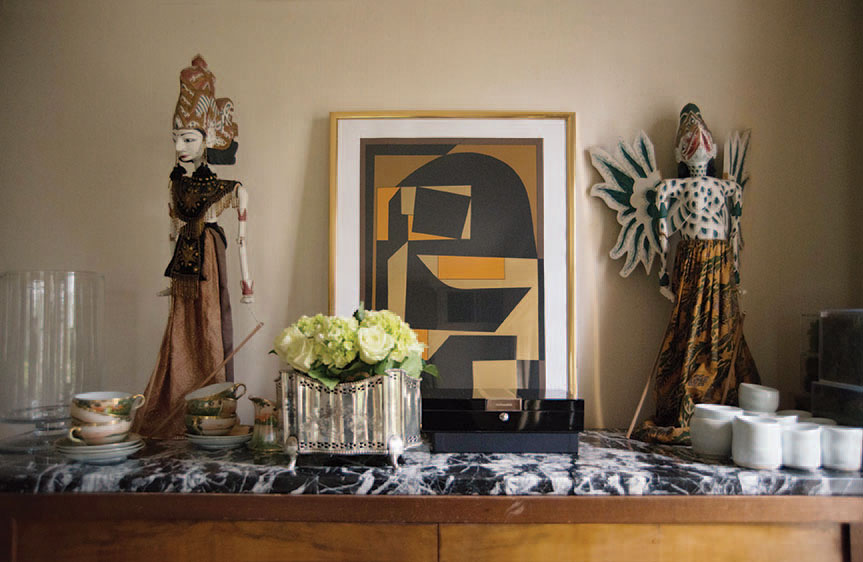
When did you first realize you were destined to be an architect and designer?
When I was 5 years old and living in Waco, I went to a friend’s house, which was completely modern and built over a stream with a glass floor. I never looked at my home the same. During high school in Houston, I watched lovely high-rise buildings go up, and I took off school one day to explore what I thought would be amazing interiors way up in the sky. I was so disappointed that these great buildings had such uninspiring interiors. At UT, I began as pre-med — there’s a long history of doctors in my family — then switched to art history. All I ever painted or drew was buildings. It was clear architecture was calling and I switched majors, graduating with a degree in architecture.
You’ve said movies and books influence your design.
I approach hotel design as if I were designing a set for a movie or a play. I even write the script and envision the set. The Surrey was my first truly traditional project where I used crown moldings and intricate traditional details. It was a conversion from a run-down extended-stay hotel into a five-star boutique hotel. The owner had given me the book Here is New York by E.B. White. I read it a couple of times, spent time on the site and then formulated my script and set. The building is 1925 Beaux Arts in the heart of the Upper East Side, so naturally my mind turned to Coco Chanel. I researched beautiful black-and-white portraits and decided that black and white romanticizes history. So the script was simply Coco Chanel coming home to her pied-à-terre on the Upper East Side, throwing her mink on the sofa and telling the butler to take it on up, as she was going to the bar. Only problem was, there was no bar. Really, it needed one, so I talked to the owners and told them that we needed a bar. They loved that idea, as the hotel abuts Daniel Boulud’s restaurant, whose patrons always had to wait in the hotel lobby with no proper pre-dinner bar venue. Everything we did was seen through the eye of Coco Chanel — interpreted by me. The bar is a play on a stage set and her lovely black-and-white compacts. The Kate Moss tapestry painting by artist Chuck Close that hangs in full view of the entry is in tribute to Chanel’s daring spirit, and the Jenny Holzer black-and-white photographs behind the front desk emphasize the allure of the powerful and unafraid Chanel.
What inspires your work?
Travel is inspiring because it gets you out of your comfort zone, and you start to see things you otherwise do not notice. I must admit, I can be almost anywhere (except a poorly designed space — and then I shut my eyes!) and be inspired. The beach for me is where I go when I need to cleanse my mind: Galveston, the Atlantic or the Pacific — they all work. Looking out to purity and seeing nothing but sea and sky, I can cleanse and refocus. I don’t like bad clutter as it disturbs my mind. But good clutter can be inspiring. My sister is an artist, and her home is filled from top to bottom with odd things collected and painted. She never lets anything go, but the clutter is so well orchestrated that it is actually inspiring. I can be equally as inspired by the chaos of cities like Hong Kong and the endless green landscape of Scotland and New Zealand, by the Rocky Mountains, by the Hudson River, by art and in particular Dia:Beacon. I’m also, of course, inspired by good architecture and design: Tadao Ando, Renzo Piano, Herzog & de Meuron, Andrée Putman.
Art is prominent in your projects. Do you collect?
I am a big fan of The Armory Show in NYC, which is in March every year. I go to Art Basel in Miami, Venice Biennale and other shows when I can. When I see a piece of art that I must have, it’s like an addiction — I literally cannot think of anything else. I’ve heard art dealers say that they know a true art collector, because they see tiny beads of perspiration on their foreheads when they look at a truly exquisite work. There is way too much “art” these days that is not art, but decoration. There is nothing wrong with decoration, but let’s not call it art. Art moves the mind and provokes thought; it expresses a point of view, and it is not timid about it. Dia:Beacon’s large-scale installations literally move me. I own a Fernand Léger that makes me smile, a Rauschenberg that calms me, a Louise Bourgeois that motivates me and two Sol LeWitt paintings that make me realize that everyone has to have an outlet.
The components of your look?
Much of the furniture, wall coverings and carpets are designed by me or my studio. We do use products that are designed by others and love them. We just mix in enough of our own that it has our signature look, or at least a look that is not easily pinpointed. There are many great design companies — Knoll, Herman Miller, Fritz Hansen and more recently Christian Liaigre, Citterio, Marc Newson, Ross Lovegrove, etc. Much of this is very expensive and not on a hotel budget. It’s another reason we end up designing so much ourselves.
The spaces you design are more like sculpture than rooms.
Many of our spaces are simply drywall and a hard-surface floor, but we have spent a great deal of time manipulating the volumes and planes with careful sculpting and careful lighting. I use light in places you would never expect. I use mirrors, too, though they are not really visible as mirrors. I think luxury comes in the subtle balance of moments of calm and points of visual excitement and in the way a space makes you stop to look and consider. I do not like predictability and I do not like matching everything. My best palettes are pulled the morning of a presentation, as they are fresh, spontaneous and not overworked. As an art major, I learned that knowing when to quit is your best skill. A sketch is profound and an overworked drawing is just that — overworked.
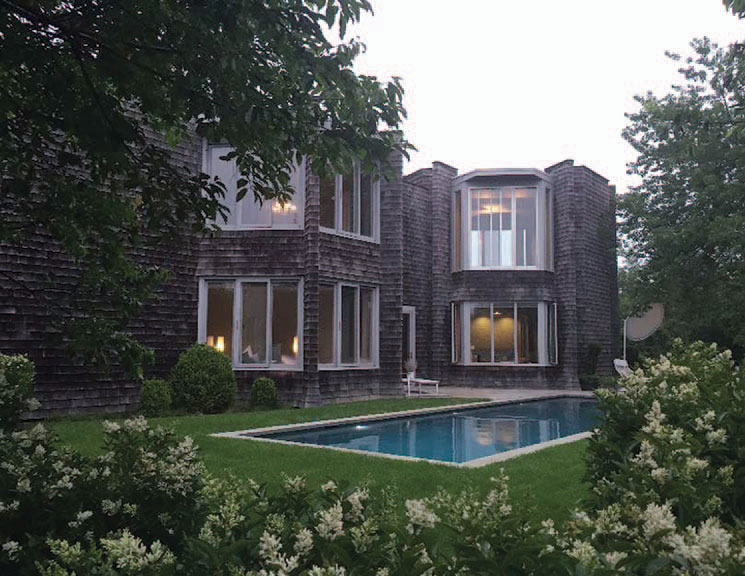
How do you turn corporate offices into such epic spaces?
I find office design to be the most underrated thing in the world. It’s hard to understand why so many do not see the importance of having inspiring office environments. Haynes and Boone asked me to create a space for their Houston law firm that would inspire and set them apart from their competition, in both hiring and maintaining their attorneys.
You’ve gotten a lot of attention and awards for your design for the corporate headquarters for the United Talent Agency. What were the challenges there?
You have to understand what their culture is like — think Johnny Depp. They needed a space that could draw talent, or inspire an agent to work for UTA versus someone else. We talked to the agents. They asked their clients what they thought, so we got a lot of the actors’ input. For example, people in L.A. don’t walk. Most people drive and arrive in the garage. So, we dropped the lobby down into the garage, and designed a big stairway connecting it to the offices upstairs. And in the garage-level lobby, we created very nice single bathrooms with small details like great lighting and full-length mirrors that make clients feel like they have privacy to freshen up. In UTA’s older offices, there was no personal space. The actors felt like they had to be on show. We designed it so that they can get up to each office without being paraded around. We also created outdoor spaces for the offices, where they can take a client for tea.
Hints about the design for the new Hotel Alessandra?
There will be nothing like it anywhere. It will have an old-world European elegance, but in a contemporary building. I was inspired by trips to Spain and Milan, with fabulous terrazzo patterns. There will be a lot of pattern. Also we’re using curved shapes and arched elements in ceilings.
What’s it like being a woman in a male-conquered profession?
I grew up with a father who taught me that I needed a career, so when medicine didn’t work out, I switched to architecture. I never really thought about it as a man’s field. The time pressure of a design or architecture career is tremendous, so having a family and rising to the top of your game are an effort, to say the least. Once in a while, when the guys are standing around taking credit for your ideas (not the design ones, as they figure you might know how to “design,” but the structural, mechanical or project siting big ideas), I do get a little annoyed. But, it’s a team effort at the end of the day, and I always end up giving those big ideas away. In my studio there is, of course, none of the man/woman thing. We all work hard, and we all have each other’s backs.
What would surprise people about you?
My standard poodle, a rescue who came with the name Lilly Bunny, always has her toenails painted the latest “It” color, and she wears a Fifth Avenue cut. Right now, she’s wearing a great ’40s mint-green polish that has a little gray in it.
Your two homes?
I’ve been restoring my George Nelson home in Montauk that I bought a few years ago. It’s the cobbler’s shoes — everything else at work comes first. I’m trying to be respectful of Nelson’s design. There are a lot of quirky angles and odd things, but they work. Like the doors don’t open 90 degrees, and a lot of the furniture is built in, so I’m leaving that. I’ve really been neglecting my home in Houston, but next year it will be the total opposite!
Personal mantra?
Always invent, and do not take design for granted.
